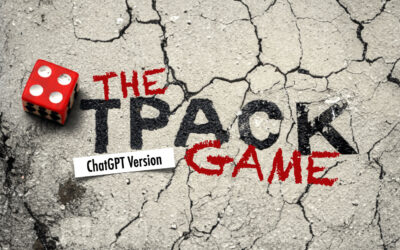The following note just went out to all the students signed up for CEP818, Creativity in Teaching and Learning (Fall semester 2011).
We hope you have had a great summer are ready to get back to school! We (Punya Mishra & Kristen Kereluik) will be your instructors for CEP818. You can find out more about us by visiting our websites. This note is to welcome you to the class and offer some specifics about what you will need to do before class starts. Please read this note carefully since it contains important information on things that need to be done before the class starts.
As you may know, CEP818 is a fully online class; there are no plans to meet face-to-face, unless that includes our digitized photos beamed over the Web. We will begin the class on Wednesday, August 31. Please note that the class will NOT be conducted through ANGEL. We will send you an email (to your MSU address) with the more details closer to the start of the semester. For now, we provide a little bit about the class followed by some information about what you need to do to prepare for it.
Creativity is of increasing importance to educators, both for their professional success and that of their students, particularly given the complex, rapidly changing world we live in. The emergence of the knowledge economy (and the knowledge worker) means that tasks are rarely “given” or structured. We are now expected to operate in a complex and chaotic ecology where our very survival and personal identity is tied up in improvising knowledgeable answers to largely unanticipated problems. It has been argued that the solution to these concerns is an increased emphasis on creativity.
So, how is it that you can start to think more creatively for yourselves, apply those methods to your teaching, and pass on some to your students? Well, it is really, really easy (well maybe not really, really easy, but it is often not as hard as we make it out to be). It can also be a lot of fun.
A critical part of becoming creative is being able to play—particularly with ideas or concepts – and feel comfortable in doing so. The activities in this course will seek to develop such an approach through, what we call, “thinking tools.” In an interactive series of modules we will explore these tools and their relationship to creativity. Each of the issues/topics will also be illustrated with multiple examples from the world of education, psychology, and business, interspersed with games and puzzles connected to the ideas being discussed.
Here are some things we would like you to do to prepare for 818:
- Buy (or otherwise obtain) the book: Sparks of Genius: The Thirteen Thinking Tools of the World’s Most Creative People by Robert and Michele Root-Bernstein. This will be our core text. Note: Amazon.com lists the book for as low as $5.50, though you may have your own favorite bookstore. You are not required to have to have read the textbook before class – but feel free to dip into it…
- Be prepared technologically:
- Have a computer with a high-speed Internet connection, a standard productivity suite (word-processing, presentation tools, etc.), an up to date browser (we recommend Firefox or Chrome) with standard plug-ins (PDF reader, Flash viewer, etc.). Note: If you can access the reading and the movies below you should be good to go.
- You should also have access to a digital camera: We plan to do some photography through the semester, so – so it will be good for you to have one just for yourself (at least for the duration of the course). It doesn’t have to be a very fancy one, though if you have one, that’s great.
- Read a book chapter and watch a video
- Download and read the attached chapter by Csíkszentmihályi on Enhancing Personal Creativity from his book, Creativity: Flow and the psychology of discovery and invention. http://bit.ly/bQ7Lx
- Watch this video by Dr. Ken Robinson where he argues for creating an education system that nurtures (rather than undermines) creativity. http://bit.ly/2tkgtH
Finally, the most important thing you can do to prepare for 818 is to come to the course website on the first day of class with an open mind and a willingness to play.
We look forward to working together this fall. Drop us an email (punya@msu.edu or kereluik@msu.edu) if you have any questions or concerns. Please remember to put CEP818 in the subject line.
Take care
Punya Mishra and Kristen Kereluik



0 Comments